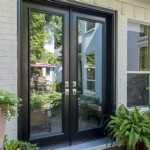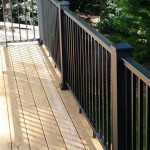How To Fix Uneven Patio Pavers On Sand Driveways
Uneven patio pavers on sand driveways are a common problem resulting from several factors, including ground settling, improper installation, or the displacement of the paver base. Addressing this issue promptly is crucial, not only for aesthetic reasons but also for safety and the longevity of the driveway. A driveway with significantly uneven pavers poses a tripping hazard and can lead to further damage if left unattended. This article provides a comprehensive guide on how to identify the causes of unevenness and the steps to effectively repair and prevent future occurrences.
Before commencing any repair work, it is essential to understand the underlying reasons for the unevenness. Proper diagnosis will guide the repair strategy and ensure the problem is fixed effectively. Common causes of uneven pavers on sand driveways include inadequate base preparation, insufficient edge restraint, water damage, and vehicular traffic.
Identifying the Cause of Uneven Pavers
The first step is a thorough inspection of the affected area. Look for patterns in the unevenness. Is it localized to a specific area, or is it widespread throughout the driveway? Localized sinking may indicate a drainage problem in that area, whereas widespread unevenness might suggest an issue with the overall base preparation.
Check for edge restraint failure. Edge restraints are critical for preventing the sand and pavers from migrating outwards. If the restraints are damaged or improperly installed, they will not adequately contain the pavers, leading to shifting and unevenness. Common types of edge restraints include plastic, metal, or concrete edging. Ensure these are securely anchored and that they are not broken or displaced.
Examine the sand base around the uneven pavers. The sand should be level and uniformly compacted. If you notice areas where the sand has been washed away or heavily compacted in some spots and loose in others, this can contribute to unevenness. This can be addressed by adding or carefully leveling the sand base.
Consider water drainage. Poor drainage can lead to erosion of the sand base and subsequent sinking of the pavers. Check for pooling water after rainfall and ensure the driveway has adequate slope to direct water away from the surface. If necessary, improvements to the drainage system will be needed before repairing the pavers.
Finally, evaluate the type of traffic the driveway endures. If the driveway is subject to heavy or frequent vehicle traffic beyond its design capacity, the pavers and their base may be stressed beyond their limit, leading to unevenness. This is particularly true for sand-based driveways, which, while offering flexibility, may not be as robust as concrete or asphalt installations.
Step-by-Step Repair Process
Once the cause of the unevenness has been identified, you can begin the repair process. This typically involves removing the affected pavers, re-leveling the sand base, compacting the base, and reinstalling the pavers.
Begin by gathering the necessary tools and materials. These include a rubber mallet, a flathead screwdriver or paver removal tool, a level, a shovel, a tamper (hand or plate compactor), sand (specifically for paver base), and a broom. Safety equipment, such as work gloves and eye protection, is also recommended.
Carefully remove the uneven pavers. For pavers that are tightly fitted, use a flathead screwdriver or a specialized paver removal tool to gently pry them up. Work slowly and methodically to avoid damaging the pavers. Place the removed pavers in a safe location, keeping them organized for easy reinstallation.
Inspect the underlying sand base. Remove any debris, weeds, or roots that may have grown into the sand. Use a shovel to redistribute the sand, filling in any low spots or compacted areas. The goal is to create a smooth, level surface for the pavers to rest on. Use a level to check the grade and ensure proper drainage.
Compact the sand base. Compaction is critical for providing a stable foundation for the pavers. Use a hand tamper or a plate compactor to thoroughly compact the sand base. This will help prevent future settling and ensure the pavers remain level. A plate compactor is recommended for larger areas to achieve uniform compaction quickly.
Reinstall the pavers. Carefully place the pavers back into their original positions. Use a rubber mallet to gently tap them into place, ensuring they are level with the surrounding pavers. Check the level frequently to maintain a consistent surface.
After reinstalling all the pavers, sweep paver sand into the joints between the pavers. This helps to lock the pavers in place and prevent them from shifting. Use a broom to distribute the sand evenly, filling all the gaps. For larger driveways, a mechanical paver sand spreader can expedite this process.
Finally, compact the entire area again using a plate compactor with a protective pad. This helps to settle the pavers and the sand, creating a more stable and even surface. The protective pad prevents damage to the paver surfaces during compaction.
Preventing Future Unevenness
Preventing future unevenness is as important as repairing existing problems. This involves proper installation techniques, regular maintenance, and addressing potential issues promptly.
Ensure proper base preparation during initial installation. A well-prepared base is the foundation for a durable and level paver driveway. The base should consist of compacted gravel and a layer of paver sand. The depth of the base will depend on the soil conditions and the expected traffic load. Consulting with a professional contractor is recommended for determining the appropriate base depth and materials.
Use appropriate edge restraints. Edge restraints are essential for containing the sand and pavers and preventing them from migrating. Choose an edge restraint system that is suitable for the type of pavers and the traffic load the driveway will endure. Ensure the edge restraints are securely anchored and properly installed.
Maintain proper drainage. Poor drainage is a leading cause of uneven pavers. Ensure the driveway has adequate slope to direct water away from the surface. Inspect and clean drainage systems regularly to prevent clogs and ensure they are functioning effectively. Consider installing additional drainage features if necessary, such as French drains or permeable pavers.
Regularly inspect the driveway for signs of unevenness. Addressing small problems quickly can prevent them from escalating into more significant issues. Look for signs of settling, shifting, or water damage. Promptly repair any damaged or displaced pavers.
Avoid overloading the driveway. Excessive weight from vehicles or equipment can damage the pavers and their base. Be mindful of the weight limits of the driveway and avoid subjecting it to loads beyond its capacity. Distribute weight evenly when parking heavy vehicles.
Consider sealing the pavers. Sealing the pavers can help protect them from water damage, staining, and wear. A sealant can also help to stabilize the sand in the joints between the pavers, further preventing shifting and unevenness. Choose a sealant that is appropriate for the type of pavers used in the driveway.
By following these guidelines, homeowners can effectively repair uneven patio pavers on sand driveways and take proactive steps to prevent future occurrences. A well-maintained paver driveway not only enhances the aesthetic appeal of the property but also provides a safe and durable surface for vehicle traffic and pedestrian use. Consistent maintenance and prompt attention to issues are key to ensuring the longevity and stability of the paver driveway.

How To Fix Uneven Patio Pavers

How To Fix Uneven Pavers Fixing Sinking Guide

How To Reset Pavers The Potato

How Do You Fix Uneven Pavers

How To Pave The Ultimate Guide N Paving Centre
Uneven Paver Patio Surface And Solutions

How To Re Level Sunken Driveway Blocks Easy Diy Fix

Why Re Sand Prolongs The Life Of Your Patio Or Block Paving Driveway

5 Common Patio Problems And How To Fix Them Trunorth Landscaping

How To Fix Damaged Driveways And Uneven Paving Procompare Co Za
Related Posts








